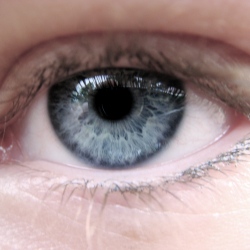
UC Berkeley researchers have developed an new method for inserting genes into retina cells that is easier and more effective, It could greatly expand gene therapy to help restore sight to patients with blinding diseases ranging from inherited defects like retinitis pigmentosa to degenerative illnesses of old age, such as macular degeneration.
Unlike current treatments, the new procedure delivers genes to hard-to-reach cells throughout the entire retina.
Over the last six years, three groups of researchers have successfully restored some sight to more than a dozen people with a rare inherited eye disease called Leber’s congenital amaurosis, which leads to complete loss of vision in early adulthood. by injecting a virus with a normal gene directly into the retina of an eye with a defective gene.
They achieved this by inserting this corrective gene into adeno-associated viruses (AAV), and injecting these common but benign respiratory viruses directly into the retina.
The photoreceptor cells take up the viruses and incorporate the functional gene into their chromosomes to make a critical protein that the defective gene could not, rescuing the photoreceptors and restoring sight.
However, even with the invasive process, the virus and associated gene were not capable of reaching all the retinal cells that needed fixing. The technique cannot be applied to most blinding diseases because the needle often causes retinal detachment, making the situation worse.
Also, the standard AAV used in eye and other types of gene therapy cannot penetrate into tissue to reach the photoreceptors and other cells, such as retinal pigment epithelium, that need to be fixed. The retina is about 100,000 times thicker than the diameter of AAV, which is about 20 nanometers.
In addition, “sticking a needle through the retina and injecting the engineered virus behind the retina is a risky surgical procedure,” said David Schaffer, professor of chemical and biomolecular engineering and director of the Berkeley Stem Cell Center at UC Berkeley.
“But doctors have no choice, because none of the gene delivery viruses can travel all the way through the back of the eye to reach the photoreceptors – the light sensitive cells that need the therapeutic gene.”
